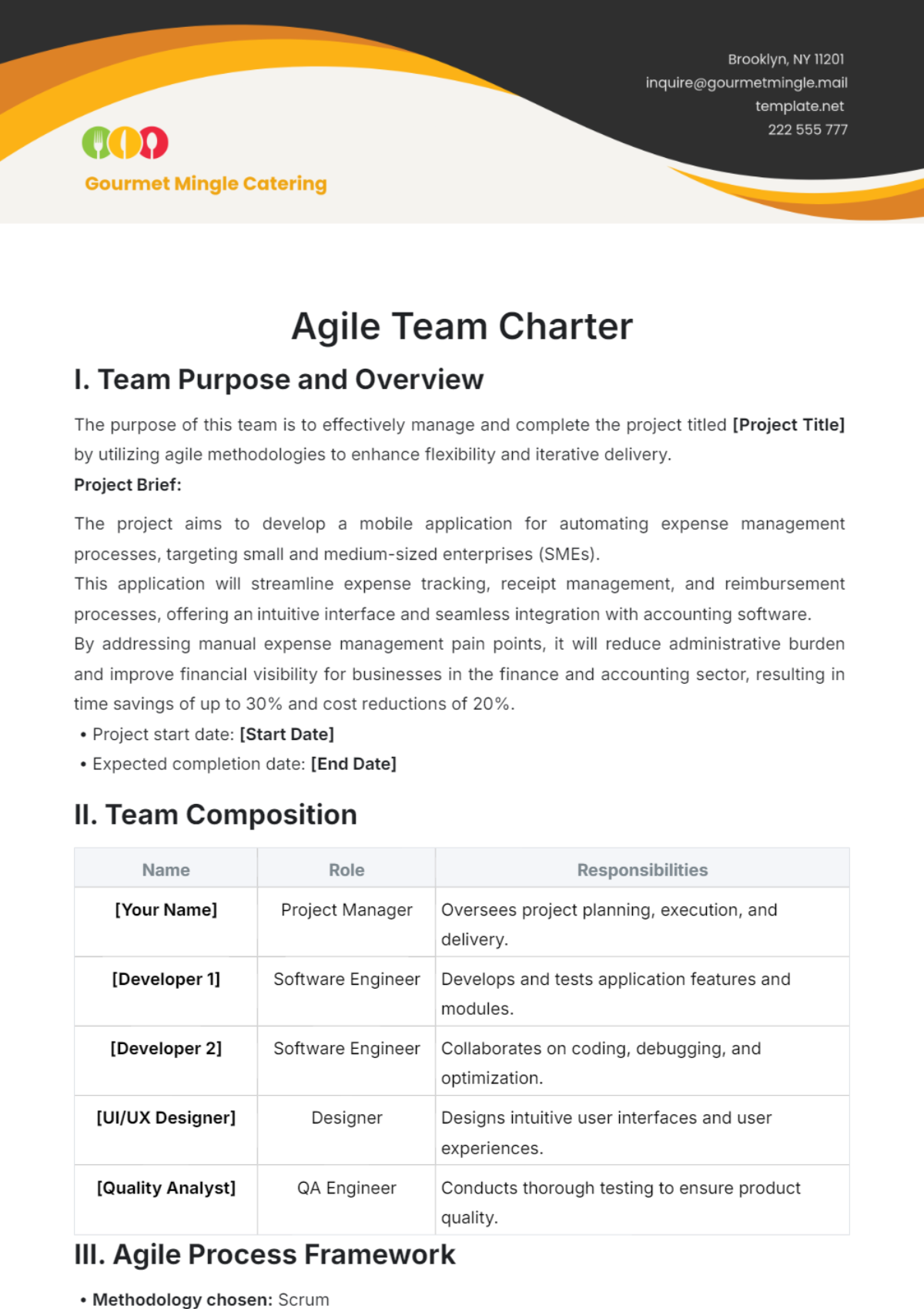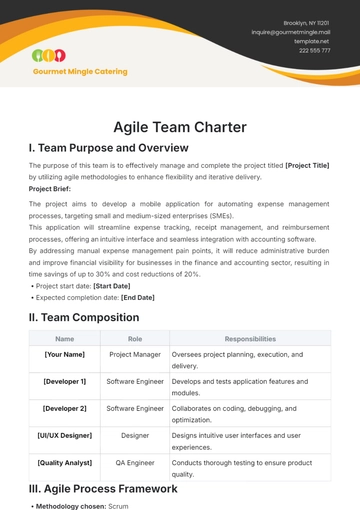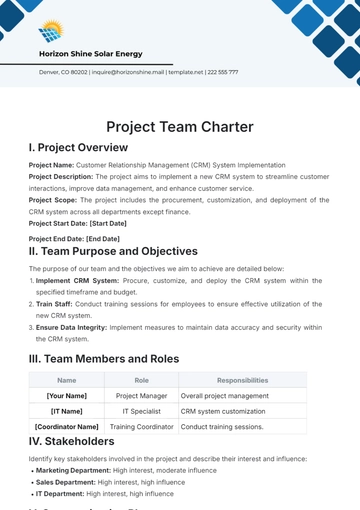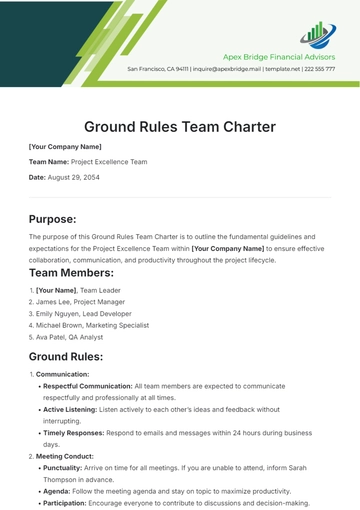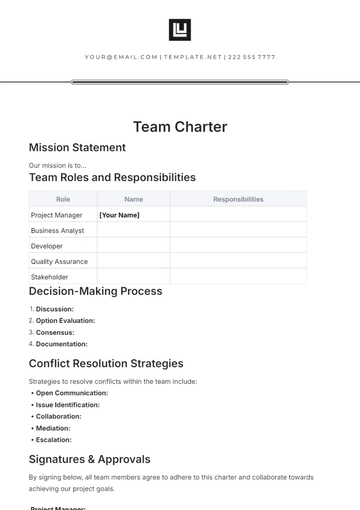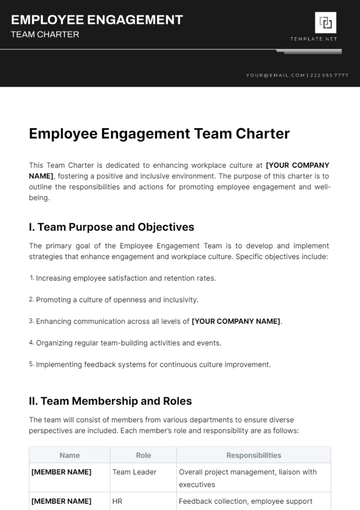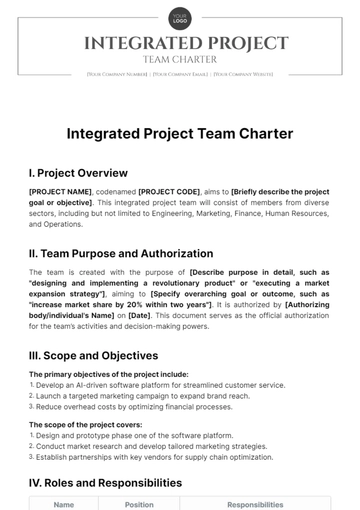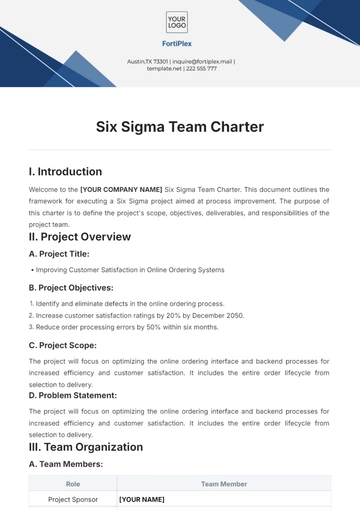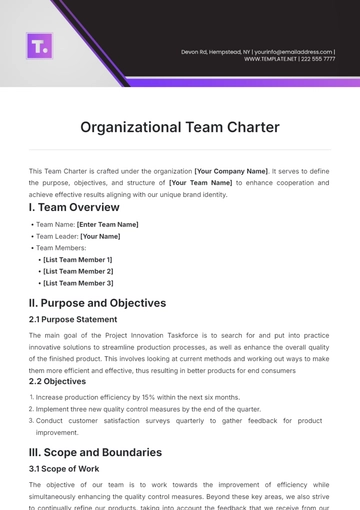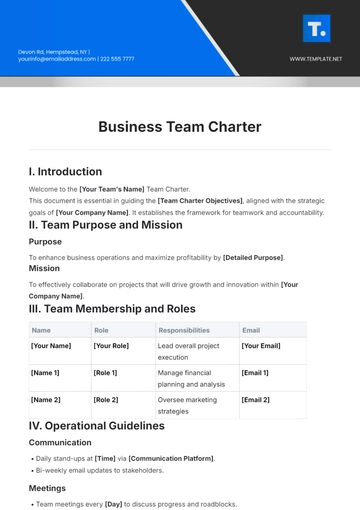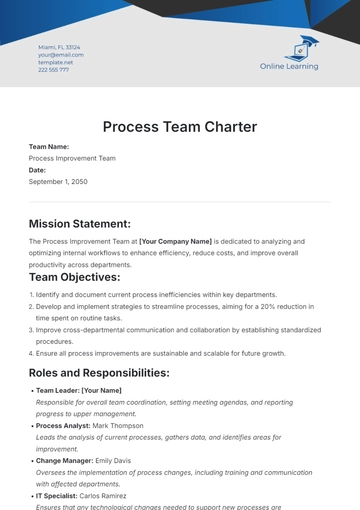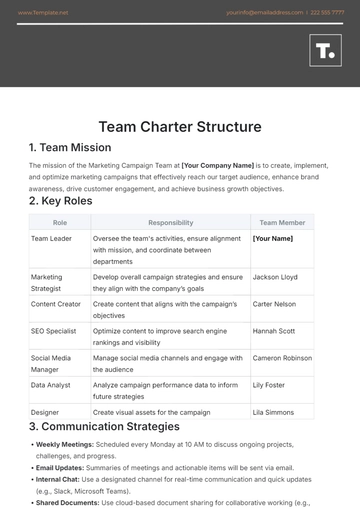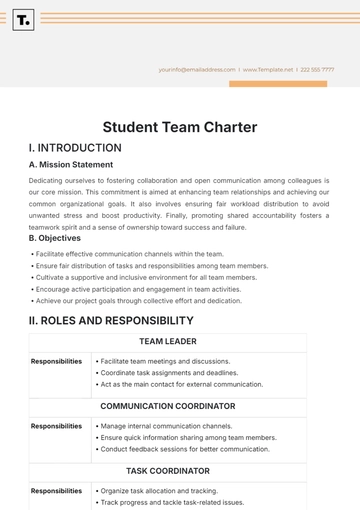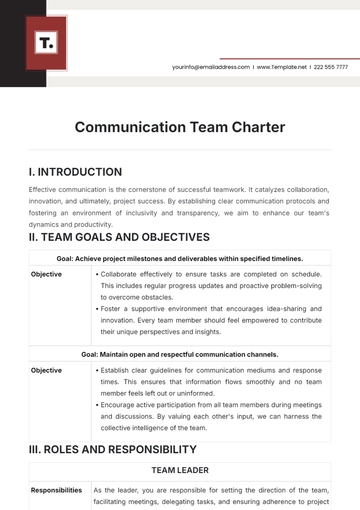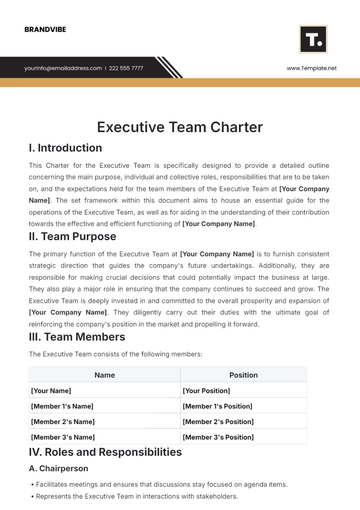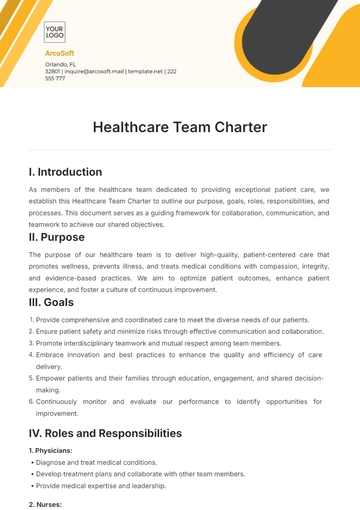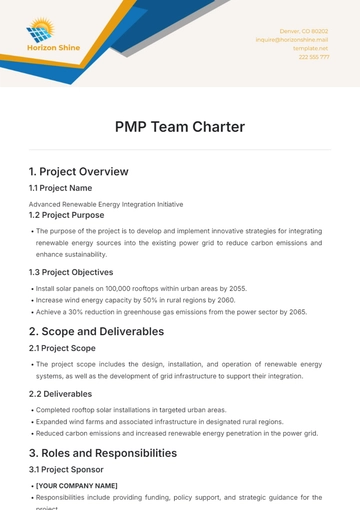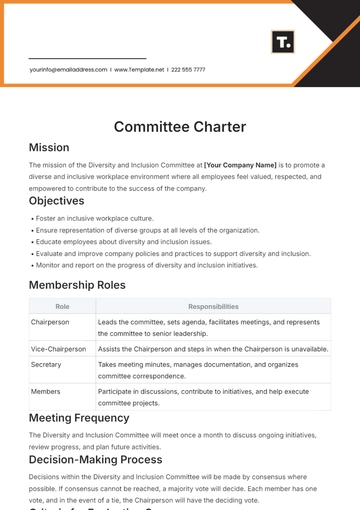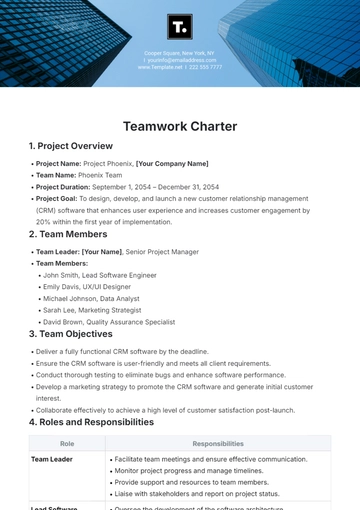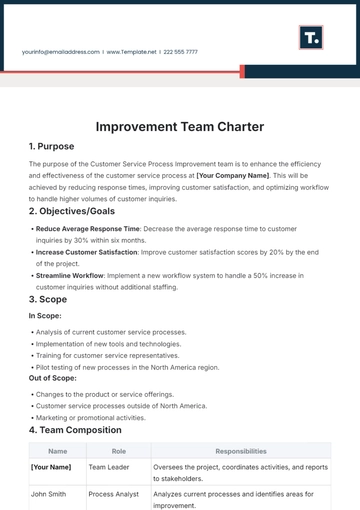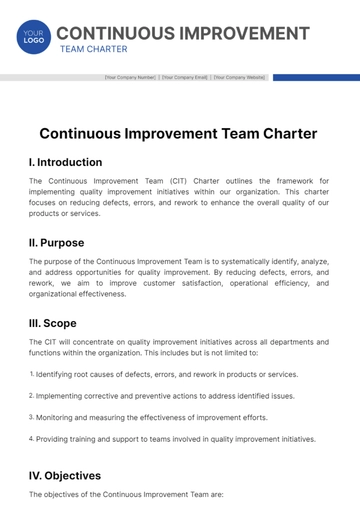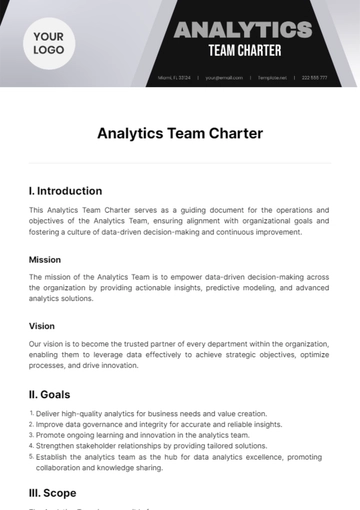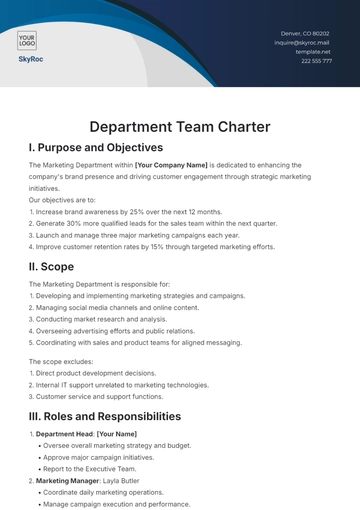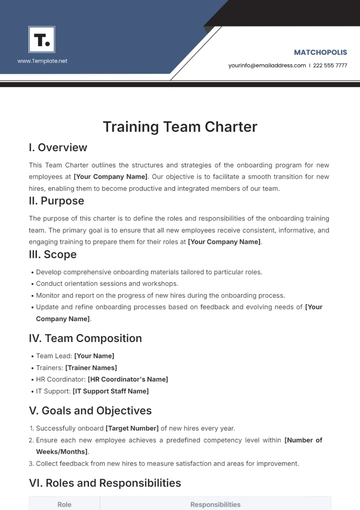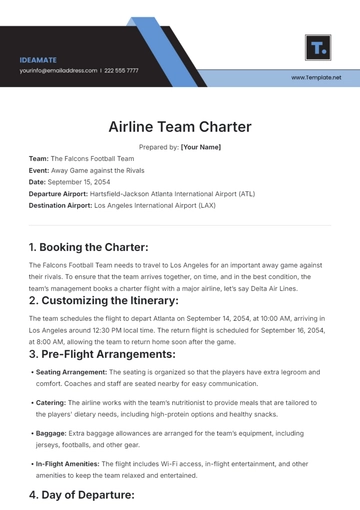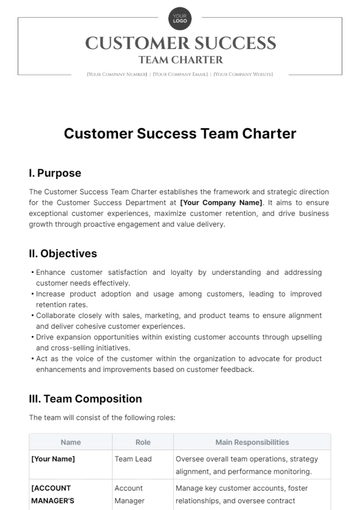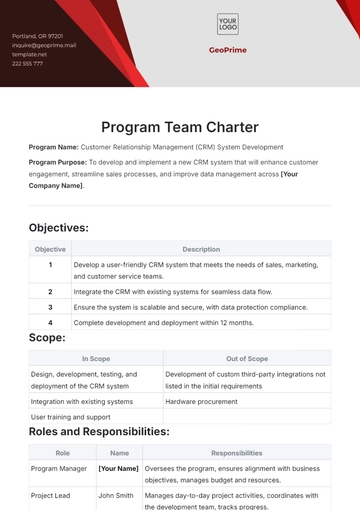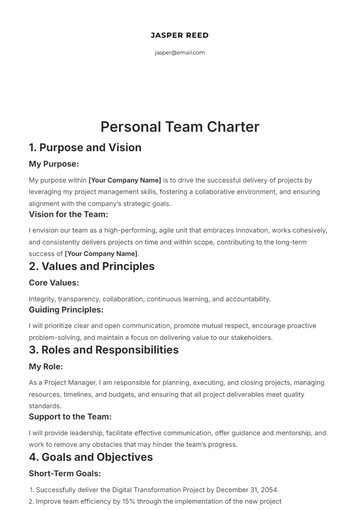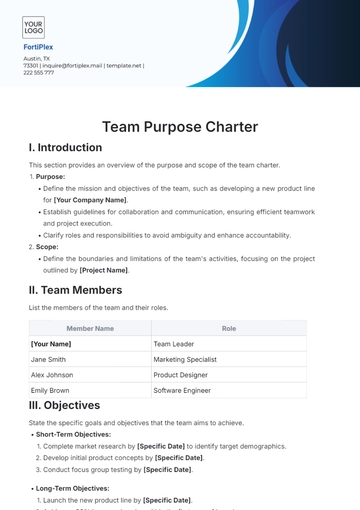Agile Team Charter
I. Team Purpose and Overview
The purpose of this team is to effectively manage and complete the project titled [Project Title] by utilizing agile methodologies to enhance flexibility and iterative delivery.
Project Brief:
The project aims to develop a mobile application for automating expense management processes, targeting small and medium-sized enterprises (SMEs).
This application will streamline expense tracking, receipt management, and reimbursement processes, offering an intuitive interface and seamless integration with accounting software.
By addressing manual expense management pain points, it will reduce administrative burden and improve financial visibility for businesses in the finance and accounting sector, resulting in time savings of up to 30% and cost reductions of 20%.
II. Team Composition
Name | Role | Responsibilities |
|---|
[Your Name] | Project Manager | Oversees project planning, execution, and delivery. |
[Developer 1] | Software Engineer | Develops and tests application features and modules. |
[Developer 2] | Software Engineer | Collaborates on coding, debugging, and optimization. |
[UI/UX Designer] | Designer | Designs intuitive user interfaces and user experiences. |
[Quality Analyst] | QA Engineer | Conducts thorough testing to ensure product quality. |
III. Agile Process Framework
Methodology chosen: Scrum
Sprint Duration: 2 weeks
Meeting Schedules: Daily Standup (15 minutes), Sprint Planning (2 hours), Sprint Review (1 hour), Sprint Retrospective (1 hour)
Tools for communication and project tracking: Slack for daily communication, Jira for task management, Bitbucket for version control, Confluence for documentation.
IV. Goals and Objectives
Deliverable 1: Fully functional MVP (Minimum Viable Product) with core features implemented.
Deliverable 2: Beta version release with additional features and refined user interface.
Success Metrics: On-time delivery of milestones, user satisfaction scores, bug resolution rate, and adherence to budget constraints.
V. Governance
Decision-making process: Decisions will be made by team consensus, with the Project Manager having the final authority. Major decisions will be escalated to the steering committee.
Escalation Path: Issues requiring escalation will be communicated to the Project Manager, who will then escalate to the steering committee for resolution.
VI. Communication Plan
Internal Communication: Daily standup meetings, bi-weekly sprint planning sessions, ad-hoc discussions via Slack channels dedicated to specific topics.
External Communication: Monthly progress reports to stakeholders, bi-weekly demos to gather feedback from users and stakeholders.
Reporting: Weekly progress reports detailing completed tasks, ongoing work, and upcoming priorities.
VII. Risk Management
VIII. Team Agreements
Code of Conduct: Respectful communication, constructive feedback, and commitment to meeting deadlines.
Meeting Etiquette: Punctuality, preparedness, active participation, and adherence to agenda.
Other Guidelines: Use of version control for all code changes, documentation of code review feedback, and adherence to coding standards.
IX. Approval
This charter must be reviewed and approved by the following stakeholders:
Stakeholder 1: [STAKEHOLDER NAME]
Stakeholder 2: [STAKEHOLDER NAME]
Document Approval Date: [APPROVAL DATE]

| 
|
[STAKEHOLDER 1 NAME] | [STAKEHOLDER 2 NAME] |
Team Charter Templates @ Template.net
